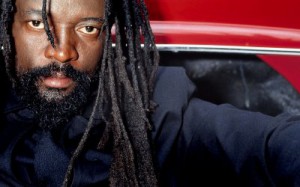The Atlantic hurricane season which the Caribbean in particular has to prepare for on a yearly basis starts in July through to November. As a child growing up in Jamaica one became familiar with terms from listening to local radio stations such as: cold front, low pressure/depression, eye of the storm, tropical storm and hurricane categories 1-5. There was too the naming of hurricanes and one can in the sixties remember hearing relatives referring to the devastating 1951 storm called Charlie that ravaged Jamaica.
Climate and weather conditions are unpredictable these days what with the advent of global warming. However, I recall that my grandmother with arthritis would be able to tell me that rain was on its way, as her aching joints would begin to hurt much more than usual as a direct result of the change in the atmospheric pressure. I would pour scorn on her weather predictions but she was always right and I marveled at her accuracy.
Probably the weather reporters of today with all their advanced technology could learn a thing or two from her novel weather forecasts. Some of us in Britain will never forget the BBC TV weatherman Michael Fish who played down an approaching storm on 15th October 1987 which is still on YouTube and has been viewed nearly a quarter of a million times. He got it wrong as Britain experienced one of the worst storms that night with winds of over 100 miles per hour and about 15 million trees destroyed, many falling on roads and railways causing major transport delays.
Most of the earlier hurricanes whilst I was living in Jamaica were expected to make a direct hit on the island but miraculously veered off course and ended up battering Cuba situated some 90 miles to the north. In naivety as a youngster I used to think that was because it was a communist country.
Since then there have been many more storms in the Caribbean and just a few that stand out are hurricane Gilbert (1988) hurricane Hugo (1989) and hurricane Ivan (2004).
Over the years the immense damage caused in some Caribbean islands by these forces of nature with very powerful winds accompanied by heavy rainfall and inevitable flooding have meant severe loss of life and damage to property running in to millions of dollars
On a trip that I made to Dominica in 2018 for a diabetes symposium sponsored by the Queen’s Diamond Jubilee Trust and the London School of Hygiene and Tropical Medicine the destruction brought on by hurricane Maria a deadly category 5 in 2017 was incredible. It literally changed the landscape of that beautiful island noted for its flora and fauna.
Even the volcano that became active in 1995 after a long period of dormancy in the Soufriere Hills of Montserrat gave the occupants living close by ample time to evacuate as it spewed ash and lava for a while before its full-scale eruption. It was a traumatic time for the people of Montserrat who had to flee to safety as a cordon was put in place that no one could breach. Several residents lost their homes but at least they too unlike an earthquake which happens suddenly had some time to do so.
My preference would be for a hurricane any day given the choice between it and an earthquake as one can at least prepare for the former instead of the suddenness that comes from earth tremors and earthquakes. In the space of a decade Haiti has suffered two of the most devastating earthquakes and the destruction that they wrecked on the island including the Presidential Palace in 2012 with images viewed across the world, represent the magnitude of that natural disaster. To this day those images are vividly instilled in my memory.
Natural disasters come in many ways and the Office of Disaster Preparedness and Emergency Management in Jamaica is the disaster preparedness coordinating body which also coordinates responses to inter-island disasters with the Caribbean Disaster Response Emergency Agency.
Indeed, there really is a time, a place and a season and one can only hope that countries prone to hurricanes take the necessary precautions when full scale alerts are announced by moving residents, belongings and livestock to higher ground to limit the damage that might ensue especially in low lying areas where tidal waves surge and cover everything in their path. Battening down the hatches is also of paramount importance as is stocking up with an ample supply of non-perishable food, water, medicine and a source of light to counter the darkness as most electricity is cut off as a necessary precaution.
So, please be safe, alert and cautious and kindly think of my grandmother’s favourite saying ‘ There is always danger where no danger shows’.




